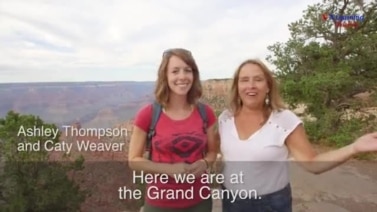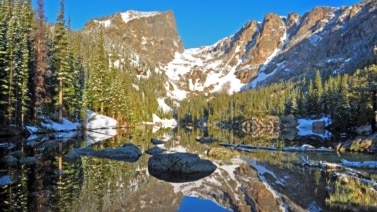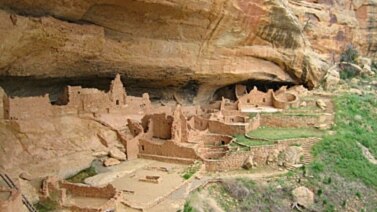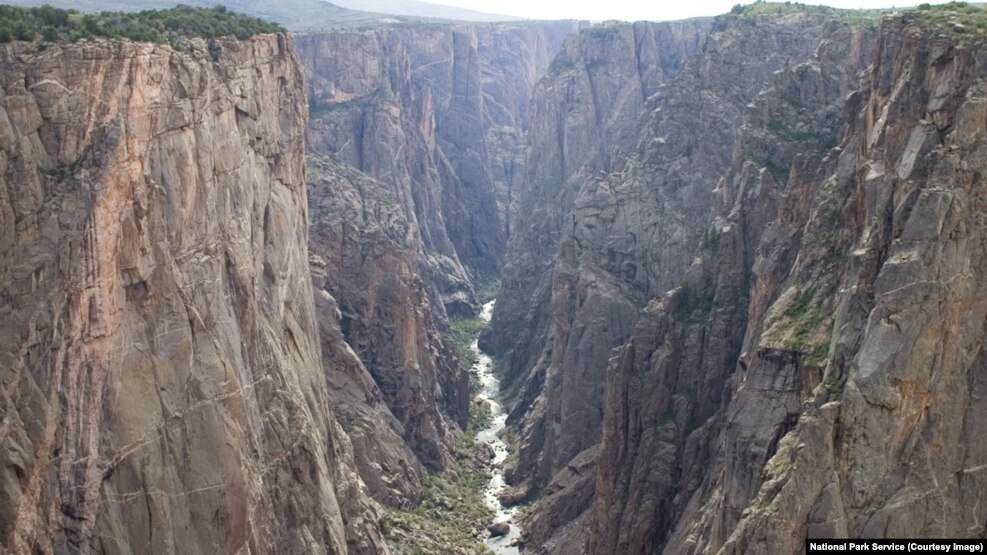
Our national parks journey this week takes us to the western state of Colorado. There, you will find a 77-kilometer-long canyon. Its exposed rocks are among the oldest you will find on Earth.
The canyon is so narrow and so deep that sunlight shines only briefly at the bottom at midday. That frequent darkness is what has given this canyon its name.
Welcome to Black Canyon of the Gunnison National Park!
Black Canyon seems impossibly steep and narrow. The fast moving Gunnison River formed the canyon over millions of years. As the river flows through the canyon, it drops an average of 18 meters per kilometer. The Gunnison River loses more elevation in its 77 kilometer canyon stretch than the Mississippi River does in 2,400 kilometers from Minnesota to the Gulf of Mexico.
This loss in elevation causes the river to gain speed and force. Over time, that force has carved and cut the hard rock, and created the wild and jagged rock formations found at Black Canyon. That process is known as erosion.

At its widest, Black Canyon is 14 kilometers. At its deepest point, it is 829 kilometers from the canyon edge to the floor.
Black Canyon attracted little attention from early Western explorers. In fact, no early Spanish explorers to the southwestern United States reported seeing Black Canyon. The first written record about the canyon came in 1873.
The Ute Indians certainly knew of Black Canyon. But only its rim, never the gorge, shows evidence of past human occupation. Even today, the depth and steepness of Black Canyon make it extremely difficult for humans to access.
Birds, however, have no problem surviving in the canyon environment. Black Canyon is home to many kinds of birds. They live at the canyon rim, along its walls, and by the river. Mountain bluebirds and great horned owls live in the rim area. The owls eat seeds and berries from the pinyon, juniper and oak trees found there.

Canyon wrens sing loudly within Black Canyon. Visitors are more likely to hear the birds than seen them. They build their nests on flat surfaces of the canyon walls. So do peregrine falcons. They prey on other birds. They dive at speeds up to 300 kilometers per hour to catch them.
American dippers build their nests in the gorge, next to the Gunnison River. A gorge is a narrow valley between hills or mountains. These dippers feed on insects and small fish.
Some people come to Black Canyon of the Gunnison National Park for world-class birdwatching.
But, it is the canyon itself that appeals to most visitors. Walking along the rim, seeing the canyon's towering cliffs, and hearing the powerful flow of the Gunnison River far below is an overwhelming experience.
At Black Canyon, visitors can view some of the planet's oldest exposed rocks. They are Precambrian rocks. Precambrian accounts for the Earth's history from its very beginning up until about 540 million years ago.
Precambrian rocks are described as “basement rocks” because they are usually buried deep under the surface. The only become exposed when younger rocks have been cut away by erosion or other forces. At Black Canyon, the Gunnison has eroded the canyon walls so greatly that Precambrian rocks have become visible.

Often, the canyon's rock walls look like works of art. Different kinds of rocks fold together and form colorful patterns. The patterns change as the sun hits different parts of the walls.
One area of the canyon is known as Painted Wall. It is the highest cliff in Colorado. Long pink bands of rock cover this section of the canyon, as if a person took a paintbrush to the wall.
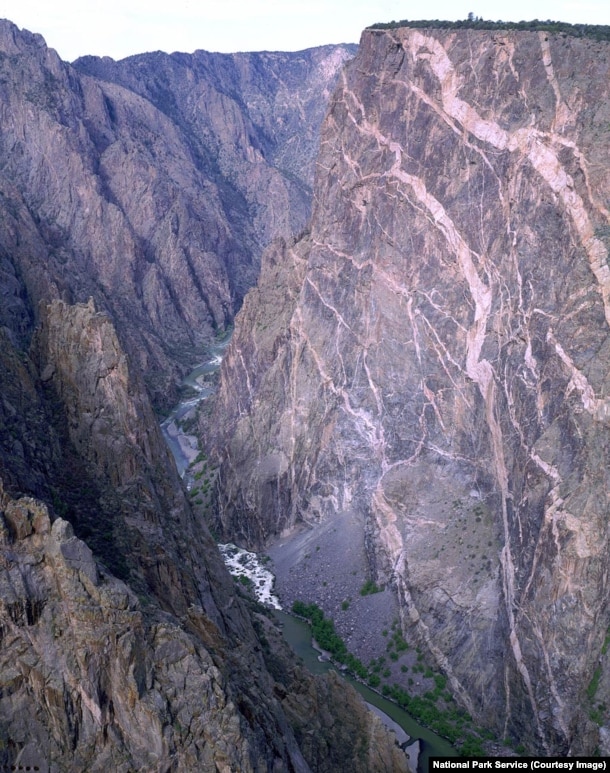
This pattern formed as hot liquid from below the Earth's surface forced its way into rock cracks. As it slowly cooled, large crystals formed. The bands get their pink color from a crystallized mineral called potassium feldspar.
Protecting the canyon
Local people knew how just special Black Canyon was. They began urging Congress to protect the canyon in the 1930s. It became a national monument in 1933. And in 1999 it became a national park.
The park protects more than 22 kilometers of the canyon. Most visitors spend their time exploring the canyon rim by foot or by car. Several kilometers of trails lead to many overlook points. A road also leads to several breathtaking views.

The U.S. Congress named the lands below the canyon rim a Wilderness Preservation System. This is meant to “protect forever the land's natural conditions.”
Some adventurous travelers choose to explore this wilderness by hiking down to the inner canyon. There are no marked trails to guide them. Hikers must first get a wilderness use permit. These permits are free, but only a limited number are available each day.
Many of the paths are difficult to follow. Some are also dangerous. The Warner Point trail, for example, drops more than 820 meters. Walking down takes more than two hours. Walking back up can take up to four hours.
The park service warns that poison ivy grows wildly in the inner canyon. There is also the risk of falling rocks.
But, to reach a place where no humans ever tried to live is the reward. In the words of a 1901 explorer to Black Canyon's river area, “Our surroundings were of the wildest possible description. The roar of the water...was constantly in our ears...Occasionally a rock would fall from one side or the other, with a roar and crash, exploding like a ton of dynamite when it struck bottom, making us think our last day had come.”
I'm Ashley Thompson.
And I'm Caty Weaver.
Ashley Thompson reported and wrote this story with materials from the National Park Service. Caty Weaver was the editor.
Words in This Story
steep - adj. almost straight up and down : rising or falling very sharply
elevation - n. the height of a place
jagged - adj. having a sharp, uneven edge or surface
erosion - n. the process by which something is worn away
rim - n. the outer edge of a usually round object
access - n. a way of getting near, at, or to something or someone
cliff - n. a high, steep surface of rock, earth, or ice
overwhelming - adj. very great in effect
basement - n. the part of a building that is entirely or partly below the ground
adventurous - adj. not afraid to do new and dangerous or exciting things
